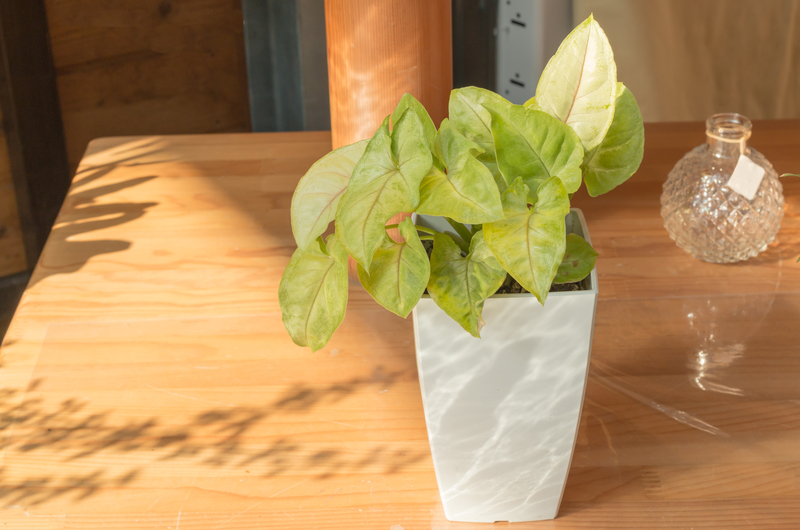Ensuring Your Garden's Safety During Weather Fluctuations
Posted on 16/08/2025
Ensuring Your Garden's Safety During Weather Fluctuations
The weather is more unpredictable than ever, and as gardeners, we need to be increasingly proactive in protecting our plants from its whims. If you cherish your green sanctuary, it's crucial to know how to keep your garden safe during changing weather conditions and sudden climate events. In this guide, you will discover practical, effective techniques for ensuring your garden's safety during weather fluctuations--even when Mother Nature throws her worst your way.
Understanding the Impact of Weather Fluctuations on Gardens
Weather's unpredictable nature can be both a blessing and a challenge for gardeners. Sudden storms, heatwaves, freezes, droughts, and high winds can test the resilience of even the most established gardens. But what does weather fluctuation do to your plants, soil, and overall garden health?
- Temperature Swings: Extreme cold or heat can damage or kill sensitive plants, disrupt blooming cycles, and induce stress-related diseases.
- Heavy Rains: Flooding, root rot, soil erosion, and nutrient leaching are common hazards.
- Prolonged Droughts: Water scarcity weakens plants, making them susceptible to pests and poor growth.
- High Winds: Toppled plants, snapped branches, and destroyed structures may result.
- Frosts and Freezes: Tender perennials, vegetables, and new transplants can be wiped out overnight.
Recognizing Signs of Weather Stress in Your Garden
If you want to keep your garden safe from weather extremes, learn to recognize the earliest symptoms of stress:
- Leaf scorch or wilting
- Yellowing or browning leaves
- Stunted growth or droopy stems
- Root rot signs (mushy stems, foul odors)
- Sudden flower or fruit drop

Proactive Strategies for Weatherproofing Your Garden
Ensuring your garden's safety during weather fluctuations begins with preparation. The following strategies are essential for creating a garden ecosystem that can bounce back from adverse conditions:
1. Choose Wind-Resistant and Hardy Plants
- Opt for native or climate-adapted species, as these are naturally equipped to handle local weather shifts.
- Use drought-tolerant perennials, like lavender or yarrow, in areas prone to water shortages.
- Consider wind-resistant trees and shrubs to act as natural windbreaks and protection for more vulnerable plants.
2. Strengthen Your Soil Health
- Well-aerated, nutrient-rich soil better absorbs water during storms and retains moisture in drought.
- Apply mulch to moderate soil temperature, maintain moisture, and reduce erosion.
- Regularly integrate organic matter, such as compost, to boost soil structure and fertility.
3. Install Physical Garden Defenses
- Windbreaks: Hedges, fences, and trellised vines block and diffuse strong winds.
- Cloche, row covers, and cold frames: Temporary covers protect vegetables and seedlings from frost or hail.
- Rain gutters and French drains: Divert excess water away from garden beds to prevent flooding and soil erosion.
- Shade cloths: Deploy over tender plants during heatwaves to reduce heat stress and sunburn.
Protecting Your Garden from Specific Weather Threats
Defending Against Heavy Rain and Flooding
Waterlogged soil can suffocate roots and cause lasting damage. Take these preventive steps:
- Raised beds: Promote faster drainage and keep roots above standing water.
- Amend heavy soils with sand and compost for better structure and permeability.
- Direct roof runoff and downspouts away from garden beds using drainage channels or rain barrels.
- Install swales or shallow trenches on slopes to slow and capture excess rainwater.
Shielding Plants from Drought and Heatwaves
Extended dry periods and high temperatures must be managed proactively:
- Deep watering: Water early in the morning to minimize evaporation and encourage deep root systems.
- Mulching: Apply layers around plants to keep roots cool and retain soil moisture.
- Utilize drip irrigation systems for consistent and efficient water delivery directly to the root zone.
- Group plants with similar water needs together to avoid over- or under-watering.
- Maintain groundcover to limit bare, exposed soil prone to baking in the sun.
Frost and Freeze Protection Tactics
- Monitor forecasts: Stay alert for frost warnings and take action in advance.
- Use garden fleece, burlap, old sheets, or frost blankets to insulate vulnerable plants overnight.
- Water soil thoroughly ahead of a freeze--moist soils hold heat better than dry soil.
- Bring small container plants indoors or move them close to sheltering walls.
- Consider anti-transpirant sprays for sensitive evergreens before unexpected cold snaps.
Guarding Against High Winds and Storms
- Regularly stake tall plants, young trees, and climbing vegetables for stability.
- Prune damaged or weak branches to prevent breakage and limit wind resistance.
- Use trellising, cages, or netting to support vines and top-heavy crops.
- After strong winds, check for damage and prune jagged wounds on woody plants to reduce disease risk.
Smart Water Management During Weather Swings
Efficient irrigation and rain management are key to ensuring your garden's safety during erratic weather. Develop a flexible watering schedule that adapts to seasonal changes, rainfall patterns, and plant needs.
- Install rain barrels to collect runoff for use in dry spells.
- Check soil moisture with a probe or by hand before watering--avoid overwatering after storms and overcompensating during drought.
- Set up soaker hoses for slow, even water delivery at ground level.
- Utilize mulch as a first line of defense against both drought and heavy rainfall.
- Consider planting a rain garden in low areas to absorb and filter excess moisture.
Managing Pests and Diseases During Weather Fluctuations
Weather extremes can trigger pest and disease outbreaks. High humidity promotes fungal growth, while dry, stressed plants attract sap-sucking insects. To ensure your garden's ongoing safety during weather changes:
- Inspect plants regularly for pests or unusual leaf spots, and address problems promptly.
- Encourage biodiversity--attract beneficial insects and pollinators with companion planting.
- Keep the garden tidy; remove debris, fallen fruit, and dead leaves that harbor pathogens.
- Avoid over-fertilizing, especially with nitrogen, which can encourage lush, tender growth prone to damage.
Garden Maintenance & Recovery After Extreme Weather Events
Post-Storm Inspection and Cleanup
- Remove broken branches and heavily damaged plants as soon as possible to prevent disease.
- Allow mildly stressed plants time to recover; don't rush to prune unless necessary.
- Re-stake any toppled plants and refill eroded soil and mulch where needed.
Rejuvenating the Soil
- Test soil for compaction and nutrients after major weather swings.
- Incorporate fresh compost or organic matter to revitalize soil structure and fertility.
- Reseed or replant bare spots quickly to discourage weeds.
Plant Replacement and Transition
- If certain species fail after repeated weather events, consider replacing them with more resilient alternatives.
- Rotate crops and diversify plantings to distribute risk and increase overall garden resilience.
Leveraging Technology for Improved Garden Safety
Modern tools and technology can make a difference when it comes to ensuring your garden's safety during unpredictable weather:
- Weather apps and smart sensors: Provide advance notice of extreme conditions so you can act early.
- Automated irrigation systems: Adjust watering levels according to rainfall or soil moisture.
- Remote cameras: Allow you to check on your garden when away from home.

Conclusion: Building a Resilient, Weather-Ready Garden
A safe, thriving garden is not the result of luck, but of good preparation and continual care. By strengthening your soil, choosing resilient plants, installing physical defenses, and staying aware of weather trends, you will effectively protect your garden against the worst nature has to offer.
Ensuring your garden's safety during weather fluctuations is an ongoing process--one that rewards attention, adaptability, and smart planning. Take these steps seriously, and your green oasis will remain beautiful, bountiful, and resilient in the face of whatever the skies may bring.
Frequently Asked Questions: Weatherproofing Your Garden
- Q: What are the most effective ways to protect my garden from sudden temperature changes?
A: Use floating row covers, mulch heavily, and choose plants rated for your local climate to minimize shock from temperature swings. - Q: How often should I water my garden during weather fluctuations?
A: Adjust watering schedules based on rainfall and soil moisture checks--generally, less frequent deep watering is better than frequent shallow watering. - Q: Should I fertilize plants before or after a major weather event?
A: Avoid fertilizing right before stressful weather; focus on plant recovery with balanced, organic nutrients after the event has passed.
If you have additional questions about ensuring your garden's safety during unpredictable weather, share them in the comments or contact your local Extension office for tailored advice!

